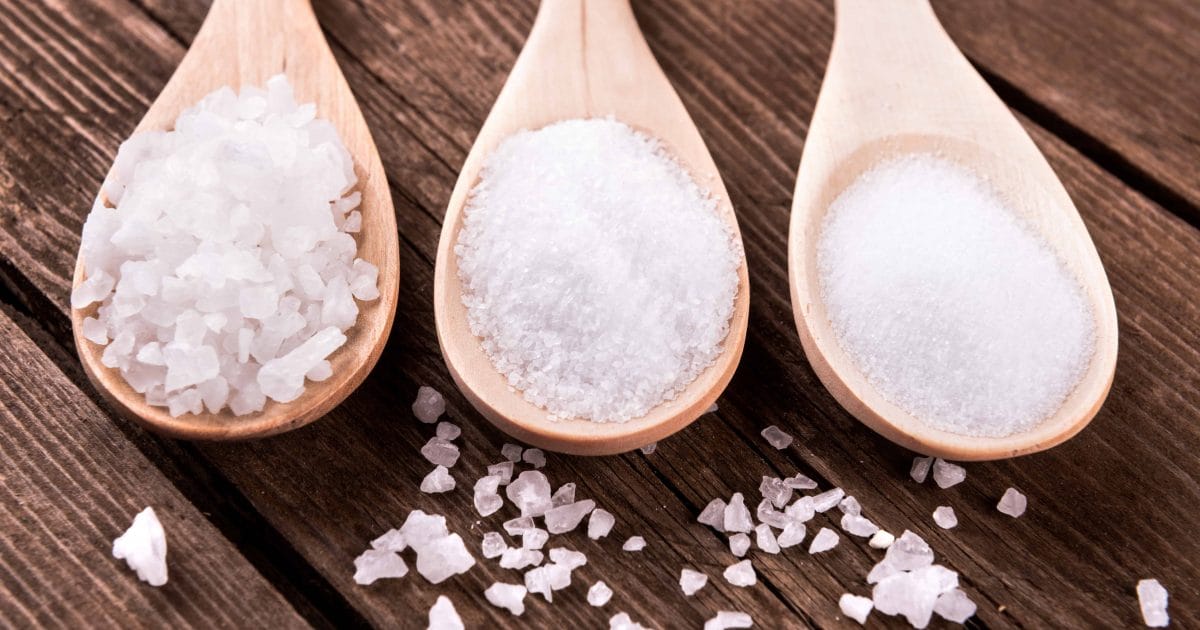
The popularity of sea salt has increased greatly over the years. Celtic sea salt, Pink Himalayan sea salt, and Black Hawaiian sea salt are just a few of the common varieties. They are widely used in restaurants for their coarse, crunchy texture and strong flavor, and are found in abundance on supermarket shelves. Some manufacturers have started using sea salt in snacks because it is ‘all natural’. Is there really a difference between sea salt and table salt? Is one healthier than the other? Which is the better choice?
Understanding the Differences
The main differences between sea salt and table salt are in their taste, texture, and processing, not in their sodium content.
Sea salt is produced through the evaporation of ocean water or water from saltwater lakes. It is usually created with minimal processing. Depending on the specific water source, certain trace minerals and elements are left behind in the salt. These minerals, such as magnesium, potassium, calcium, and other nutrients add flavor and color to the sea salt. It can also come in a variety of coarseness levels.
Table salt is typically mined from underground salt deposits. It is more heavily processed than sea salt due to the elimination of excess minerals. Additives are mixed in to prevent clumping of the crystals. Table salt is used more often in recipes as it is easier to mix with its fine texture. Most table salt also contains added iodine, as essential nutrient that helps maintain a healthy thyroid.
So, Which is Healthier?
Sea salt and table salt have the same basic nutritional value, even though sea salt is often touted as being the healthier choice. They have comparable amounts of sodium, both containing about 40% sodium by weight.
What’s the verdict? There is no real health advantage to eating sea salt over table salt. The trace amounts of minerals left in the sea salt can be easily obtained from other natural food sources. Whichever type of salt you choose to use, continue to practice moderation, or choose foods that have a lower sodium content. The Dietary Guidelines for Americans recommend limiting daily sodium intake to 2,300 milligrams or less. To put this into perspective, 2,300 milligrams of sodium is equivalent to about one teaspoon of salt daily. This includes salt added to food and salt found naturally in foods.
If you are at risk of high blood pressure, it’s important to monitor your sodium intake. If you need help altering your diet, get the help of a professional! Meet with me for a FREE, no-obligation nutrition consultation to see what a Registered Dietitian can do for you and your health!
Schedule a Nutrition ConsultationWritten by Sarah Brunner, RDN, CD; Elite Sports Clubs Registered Dietitian
Sarah is certified in food allergies/intolerances and nutritional counseling, Academy of Nutrition and Dietetics; has a certificate in Dietetics from Mount Mary University; and a BA in Education and Mathematics from the University of Wisconsin – La Crosse.

1 Comment
HI Sarah, another excellent review! I am certain that one of the ingredients frequently missing in sea salt is adequate iodine. The Midwest is known as the Goiter Belt for a lack of iodine in our soil and hence in our local vegetables. A goiter is the overgrowth of the thyroid gland as it works to produce thyroid hormones without adequate iodine.Since iodine was added to table salt, it isn’t seen much. This will age me but I do remember people in my small town as a child with the presence of a ‘goiter’. That said, one can certainly obtain adequate iodine from other sources other than table salt.